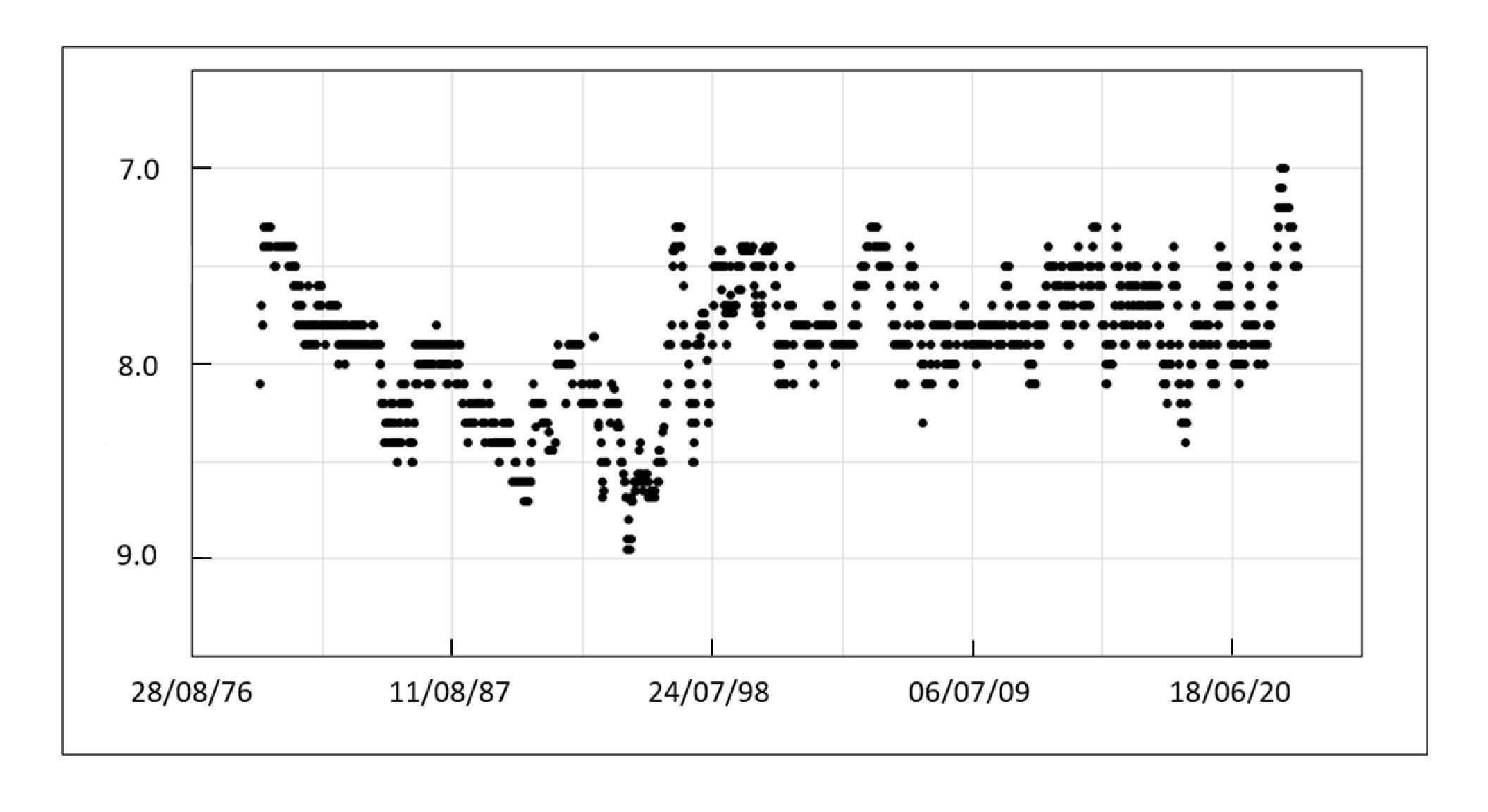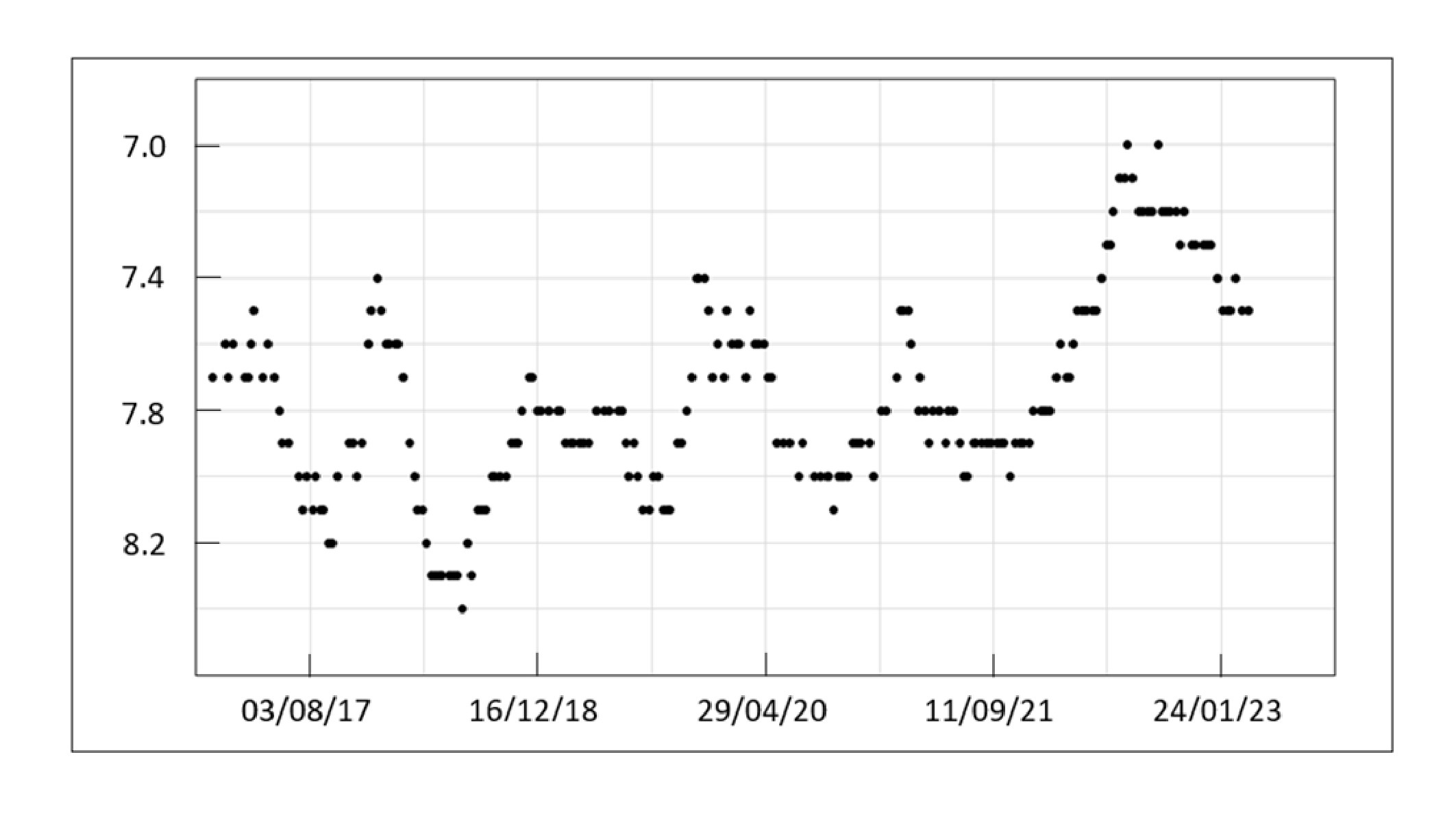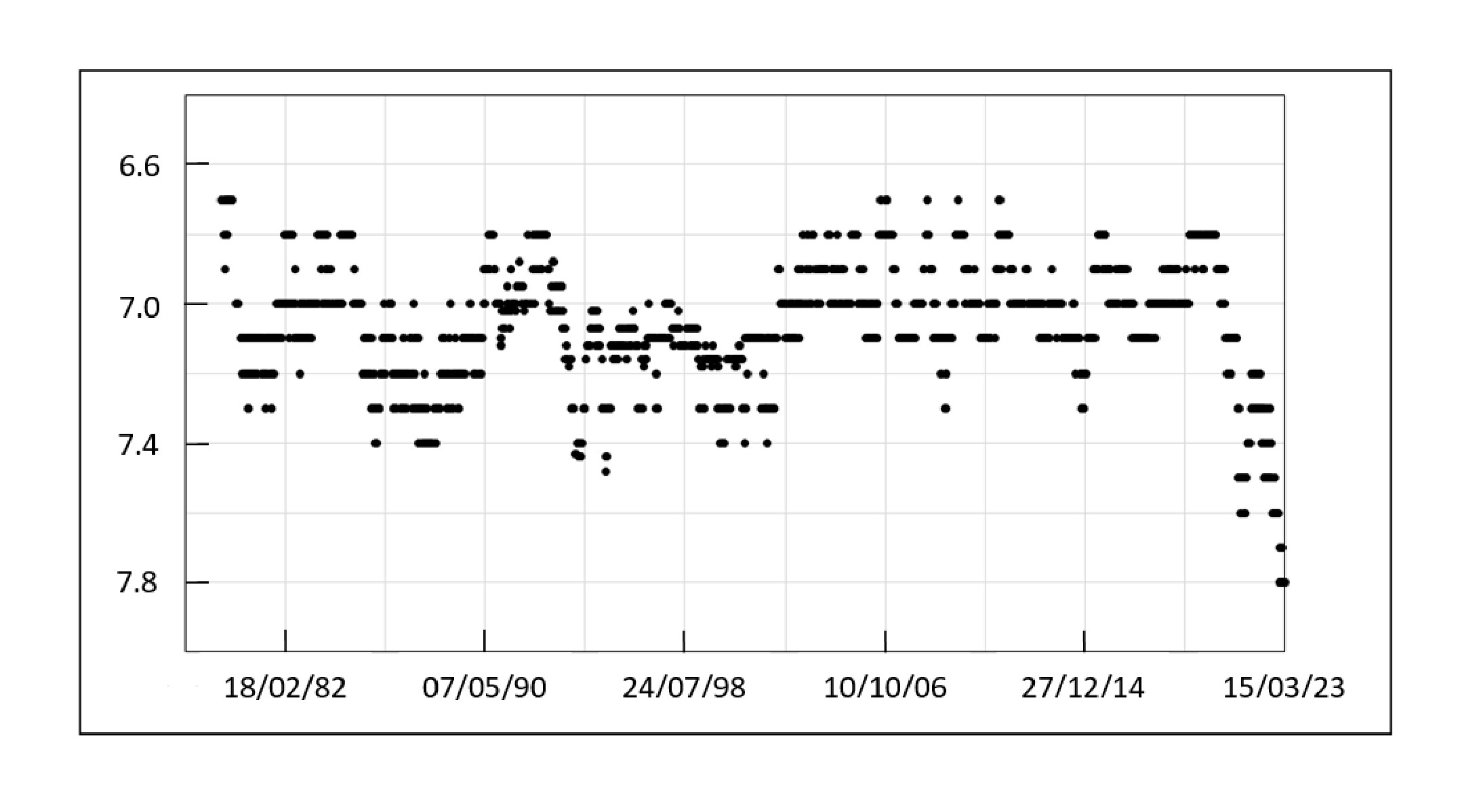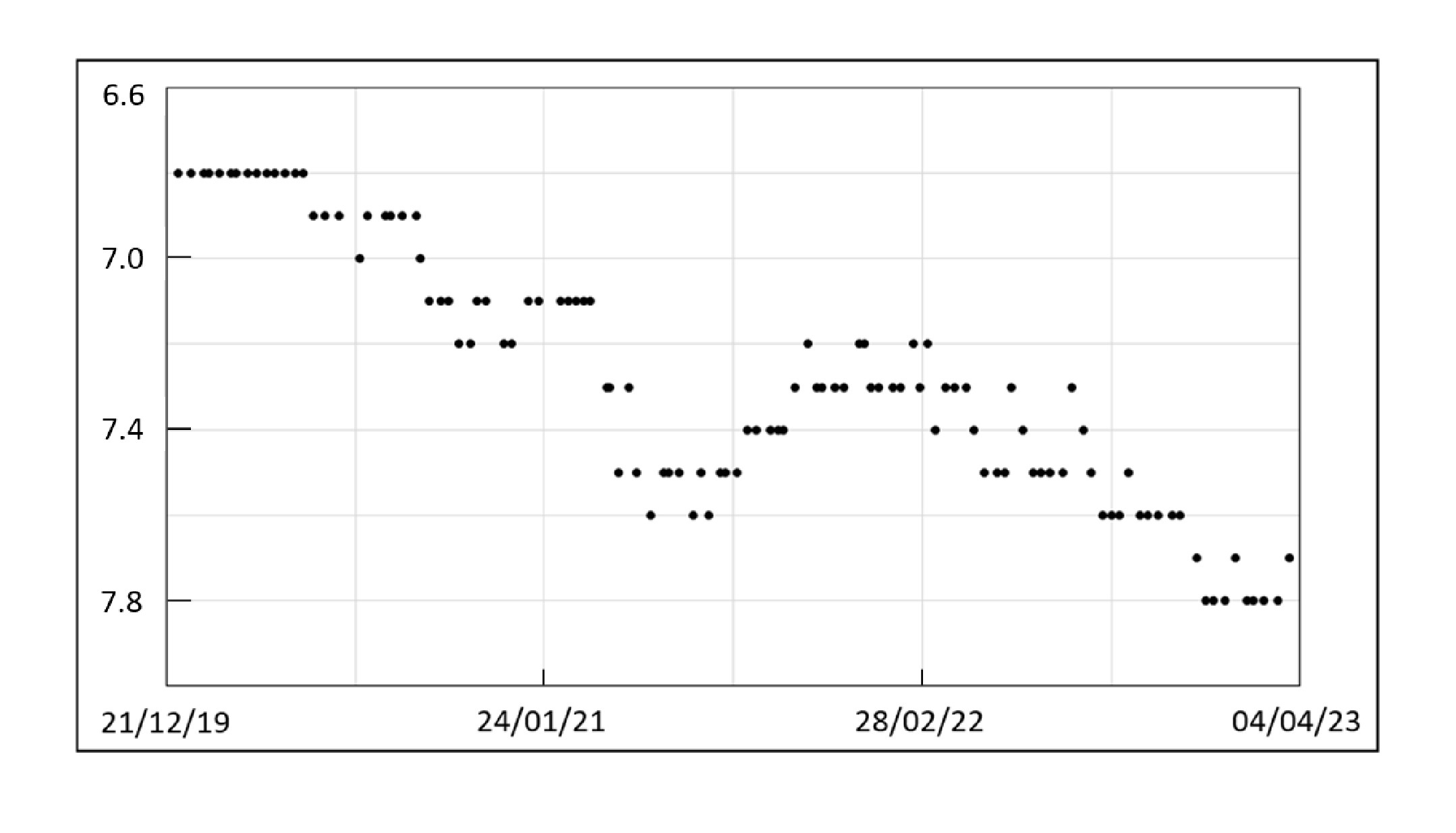Delta Cephei’s companion variables
2023 June 7
It is common knowledge that the prototype Cepheid variable star, delta Cephei, was discovered by John Goodricke in 1784 from the city of York. What is less well known is that there are two other stars in the same region of sky that were discovered to be variable a century later by founding members of the Association, who were also based in the north of England.
W and RW Cephei are two red variable stars, easily visible in small binoculars and positioned in a rich Milky Way field that is circumpolar from the UK. Both are luminous orange-red giants and are some of the largest stars presently known.
W Cephei
W Cep was originally listed in the Bonner Durchmusterung star catalogue as BD +57° 2568. On 1890 Jan 23, the Rev Thomas Henry Espinall Compton Espin visually estimated the magnitude of the star to be 8.2, which was at variance with the then catalogue value of 7.3, and noted its orange colour in his 17.25-inch equatorial at Wolsingham Observatory, Tow Law in County Durham.1 Variability was confirmed by Paul S. Yendell from visual observations made in 1893 from Dorchester, USA; the star was officially named W Cephei by Seth B. Chandler in 1894.2


W Cep is a spectroscopic binary consisting of a cool red supergiant of spectral class M2epIa and a small hot companion of class B0-1, with an orbital period of 2,090 days.3 The system also has unusual emission lines, produced by a circumstellar envelope containing dust and ionised gas.4
The General Catalogue of Variable Stars (GCVS) lists the magnitude range of W Cep as 7.02–9.2V, and during the years 1979–2023, the recorded range has been 7.0–8.8 visual (mv), as illustrated in Figure 1. The faintest point during this time scale was in early 1995 and the brightest spell occurred quite recently, in mid-2022.
In terms of classification, W Cep is listed as type SRC (semi-regular spectral class M or later), with no recorded periodicity. However, since 2017 there has been a distinct cyclic variation, with a period increasing from nine to about 14 months (refer to Figure 2).
W Cep lies just one degree following (east) of delta Cep and is positioned right on the galactic equator.
RW Cephei
RW Cep was originally catalogued as BD +55° 2737. Thomas William Backhouse, based at West Hendon House Observatory, Sunderland (20 miles from Espin’s Wolsingham Observatory), made a series of visual observations between 1894 and 1904 that indicated variation between 7.0 and 7.6mv (magnitude range reduced by the author).5 Confirmation of variability was provided in 1907, when Henrietta S. Leavitt derived a photographic magnitude range of 8.2–8.8 from Harvard College Observatory plates, and the star was officially named RW Cephei in 1908.6


RW Cep is a cool orange hypergiant and is frequently listed as one of the largest stars known. The spectral class differs in various sources between G8 and M2 and has been subject to a recent study by Robin Leadbeater.7
The GCVS classifies RW Cep as type SRD (semi-regular spectral class K or earlier) with a period of 346 days, and gives a photographic magnitude range of 8.6–10.7. During the period 1979–2023, the visual range was between 6.7 and 7.8 with mostly irregular behaviour, as shown in Figure 3. Since 2020, there has been a steady dimming trend, partially arrested in late 2021 (refer to Figure 4). This dimming event has attracted comparison with activity in alpha Ori in early 2020.8 RW Cep remains faint (7.7–7.8mv) at the time of writing in 2023 April.
RW Cep is positioned 2.5 degrees south and slightly preceding (west) of delta Cep. It was responsible for fixing part of the boundary between the constellations of Cepheus and Lacerta in 1928.
Most of the time, W Cep tends to be fainter than RW Cep, but during the second half of 2022 the reverse was true.
Although W and RW Cep were known to be variable shortly after the formation of the Association in 1890, it was not until the Binocular Sky Society merged with the BAA Variable Star Section in 1974 that both stars were added to the Section’s binocular programme. Subsequently, each has been well observed, and they remain popular objects for all-year monitoring. Visual observations can be undertaken with binoculars using the chart provided in Figure 5. As with most red variables, it is recommended that observations are made at intervals of 10 days if practicable.

To conclude, when you next see the prominent head of King Cepheus, consisting of delta, epsilon, zeta and lambda, it is worth deploying a pair of binoculars to take a closer look at the red variable stars described herein, and to reflect upon the localised circumstances of their discovery at a time when the Association was in its infancy.
References
1 Astronomische Nachrichten, 126, 361 (1891)
2 Astronomical Journal, 13, 187 (1894)
3 Astrophysics, 49, 164–172 (2006)
4 Astronomical Journal, 166, 725 (1971)
5 Publications of West Hendon House Observatory, 3, 113–114 (1905)
6 Astronomische Nachrichten, 179, 85 (1908)
7 BAA VSS Circular, 195, 7–12 (2023)
8 The Astronomer’s Telegram, 15800 (2022)
Note: Thanks are due to Gary Poyner, who constructed the light curves from the VSS database, and also to Denis Buczynski for custom imaging the field of W and RW Cep.
https://britastro.org/wp-content/uploads/2023/06/fig1_8cm.tif
https://britastro.org/wp-content/uploads/2023/06/Figure-5.tiff
| The British Astronomical Association supports amateur astronomers around the UK and the rest of the world. Find out more about the BAA or join us. |
